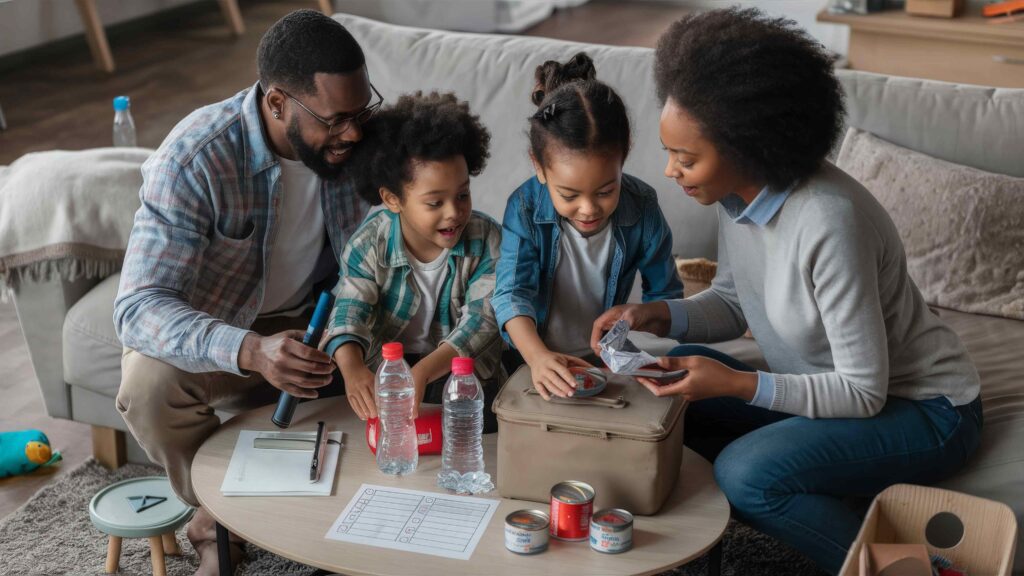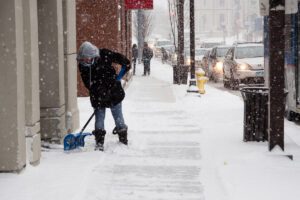11 tips to teach children about emergency preparedness.

In the event of an emergency, would your child know what to do? It’s a crucial question to consider, because when kids are empowered to face emergencies with courage and competence, they’re significantly safer and better equipped to handle unexpected situations.
To ensure your child is ready for any emergency, we’re outlining practical steps and tips that cover a wide range of scenarios. It’s our hope that this guide will help parents teach children about emergency preparedness, from understanding common disasters and creating a comprehensive emergency plan to practicing basic first aid and leveraging technology to stay informed.
How to teach children about emergency preparedness
To help your child become more resilient and prepared, giving both of you peace of mind knowing they can handle whatever comes their way, read on.
Start small. Ensure your child knows how (and when) to call 911, identify themselves, and provide their location. They should also know how to reach at least one parent, family member or adult family friend, in case they’re alone or separated.
Familiarize them with emergency alerts. To help your child recognize emergency alerts, explain what different community sirens mean and what actions to take when they hear them. You should also test a smoke alarm and carbon monoxide detector, so they understand what each one sounds like.
Understand emergency plans at school and daycare. Check with your children’s schools, daycares, and any other places they frequently visit to learn about their emergency plans. Familiarize yourself and reinforce them at home to ensure consistency.
Identify common emergencies in your area. Do a bit of research to determine the types of disasters that are most likely to occur where you live. Whether it’s earthquakes, tornados, hurricanes, or floods, knowing the specific risks will help you tailor your emergency preparedness plan accordingly.
Use technology to keep your family informed. Download emergency preparedness apps that provide alerts, tips, and resources, and consider setting up location-sharing services on your child’s phone, so you can find each other quickly in an emergency.
Find two ways to exit each room. Together, determine two ways to exit every room in your home. Practice using these routes regularly to ensure your child will know how to escape from different scenarios.
Establish two meet-up locations. In case of emergency, everyone in your family should know of two meet-up locations. For quick reunions, one should be close to your home, like a specific tree or a neighbor’s house. The other should be farther away, in case the immediate area around your home is unsafe.
Select a “safe word.” Create a family code word that can be used to convey important messages quickly and discreetly. This could be particularly useful if a neighbor or family friend needs to pick up your child in an emergency. For example, if you arrange for someone else to collect your child, they can use the safe word to confirm their identity and intentions. Make sure your child understands the importance of this word and only responds to it in genuine emergencies.
Create an emergency kit. Have essential supplies for the whole family, including a three-day supply of water (one gallon per person per day), non-perishable food items, flashlights, batteries, cell phone charging brick and cables, blankets, a first-aid kit, and any necessary medications. Periodically check your emergency supplies to ensure everything is in good condition and replace items as needed.
Teach basic first aid. If your child is old enough, show them the location and contents of your first aid kit. We recommend teaching them simple procedures, like cleaning a wound, applying a bandage, and recognizing signs of shock or dehydration.
Practice kindness and calmness. During an emergency, staying calm can help children feel more secure. Thus, it’s important to practice kindness and patience during drills and discussions about emergencies, and reassure your child that these preparations are just to ensure everyone’s safety.
Emergencies can strike at any moment, often without warning, and the best defense is to be prepared. To help them respond calmly and effectively, start to teach children about emergency preparedness today. For more tips to help before, during, and after disasters, visit Ready Kids.
This content was developed for general informational purposes only. While we strive to keep the information relevant and up to date, we make no guarantees or warranties regarding the completeness, accuracy, or reliability of the information, products, services, or graphics contained within the blog. The blog content is not intended to serve as professional or expert advice for your insurance needs. Contact your local, independent insurance agent for coverage advice and policy services.



